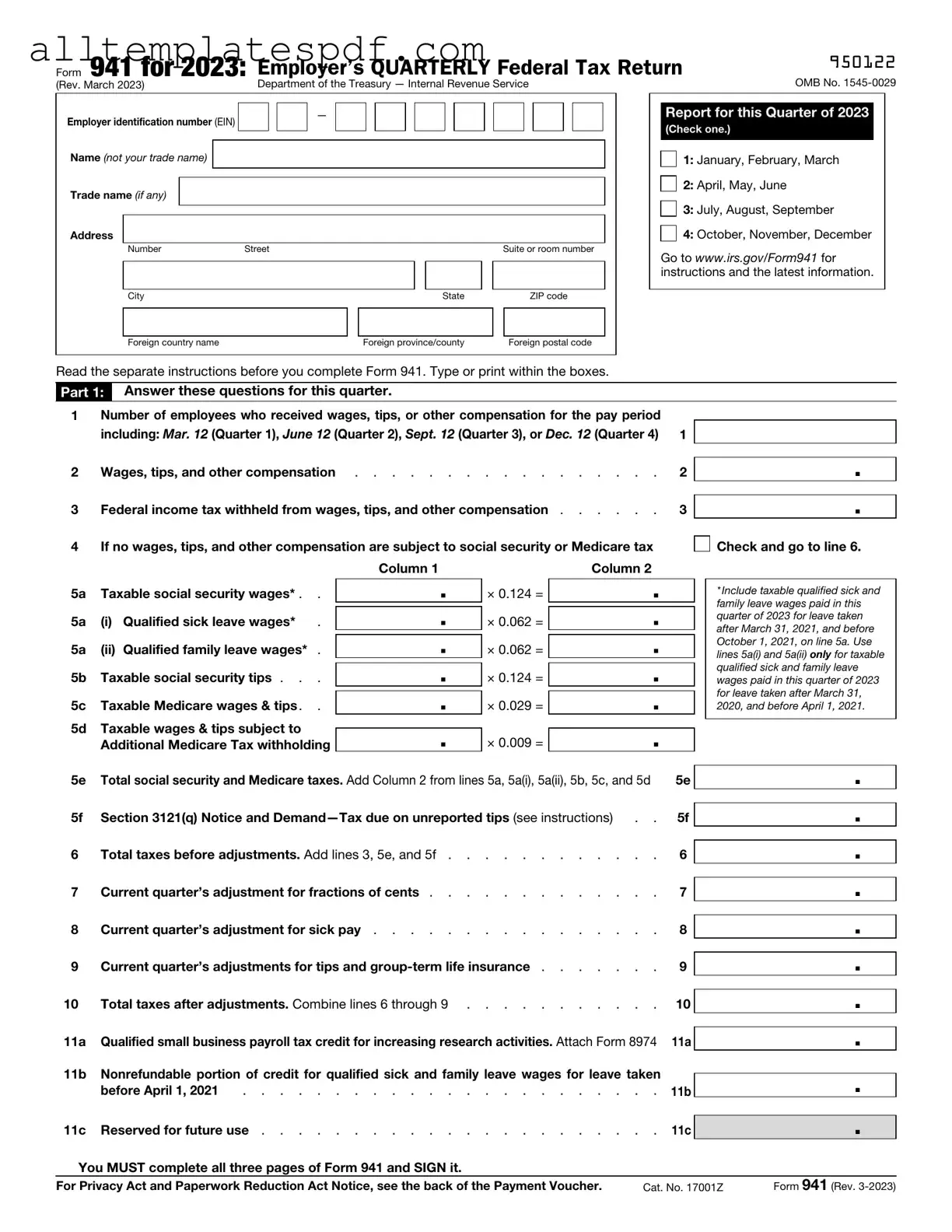Filling out the IRS Form 941 can be a daunting task for many business owners. Mistakes on this form can lead to delays, penalties, or even audits. Here are ten common errors to avoid when completing this essential tax document.
One frequent mistake is failing to report all wages accurately. It’s crucial to include all taxable wages paid to employees during the quarter. Omitting even a small amount can result in discrepancies that may raise red flags with the IRS.
Another common error is miscalculating the payroll tax liability. This can happen if you don’t keep track of the correct tax rates or if you make errors in your calculations. Always double-check your math to ensure accuracy.
Some people neglect to sign and date the form. An unsigned form is considered incomplete and will be rejected by the IRS. Always ensure that the form is signed by an authorized individual before submission.
Using the wrong tax year or quarter is another mistake that can lead to complications. It’s important to verify that you are filling out the form for the correct period. Incorrect dates can cause delays in processing and potential penalties.
Many individuals also forget to include adjustments for any prior quarter errors. If you made mistakes in previous filings, you must correct them on the current form. Failing to do so can lead to further issues down the line.
Another pitfall is not keeping adequate records to support the information reported on the form. The IRS may request documentation to verify the amounts reported. Having clear and organized records can save you time and stress.
Some filers fail to check the box indicating if they are a seasonal employer. This is an important detail that can affect how the IRS processes your return. Make sure to review this section carefully.
Another common mistake is neglecting to pay any taxes owed when filing the form. If you owe taxes, it’s essential to submit payment by the due date to avoid penalties and interest. Late payments can add up quickly.
Lastly, many people submit the form without reviewing it thoroughly. A simple review can catch errors before they become costly mistakes. Taking a moment to double-check can save you from future headaches.
By being aware of these common mistakes, you can ensure that your IRS Form 941 is completed accurately and submitted on time. This attention to detail can help you avoid unnecessary complications and maintain compliance with tax regulations.
